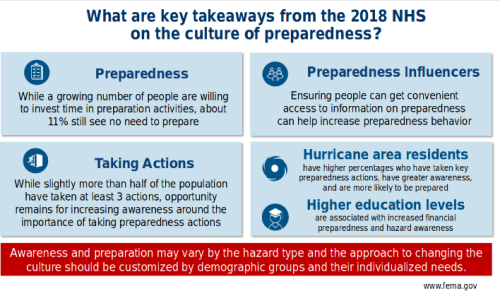Note: September is National Preparedness Month . Follow this year’s campaign on Twitter by searching for the #NatlPrep hash tag.
This month, I’ll be rerunning some edited and updated older preparedness essays, along with some new ones.
#14,289
In recent years preparedness has gotten a bit of a bad name. The popular image of a prepper - promulgated by the media - is that of a nut out gathering squirrels, as they wait anxiously for doomsday.
While that archetype undoubtedly exists, most `preppers' gear up to deal with more reasonable, and more survivable, scenarios like hurricanes, floods, blizzards, and yes, even pandemics.While I don't consider myself a survivalist, my years as a paramedic, and decades living on sailboats, in the backwoods of Missouri, or near the ocean, have instilled in me a strong desire to be prepared for emergencies.
I know first hand what it is like when things go pear-shaped, and there's no one to call for help.Which is why I promote the idea of having, and being, a `disaster buddy',
and why when I give presents to friends and family, they are almost always in the form of `preps' (see The Gift Of Preparedness - Winter 2018).
With this week's start of National Preparedness Month, FEMA has released a new national telephone poll on individuals’ attitudes and behaviors regarding preparedness.
While citing improvements over past years, Americans still have a long way to go if we are to cultivate a culture of preparedness.
FEMA Releases 2018 National Household Survey Results on Individual and Community Preparedness
September 2019
The Federal Emergency Management Agency (FEMA) has released the results from the 2018 National Household Survey (NHS). Every year, FEMA surveys the American public to assess how the culture of personal disaster preparedness and resilience has changed over time.
The NHS also measures individuals’ attitudes and behaviors regarding preparedness and assesses what influences them to begin preparing for a future hazard. Estimates from the 2018 NHS suggest that an increasing percentage of the American public are actively preparing for disasters.
57% percent have taken three or more basic actions to prepare. That’s eleven percentage points higher than last year’s estimate.
94% percent have taken at least one action to prepare.
67% percent of adults have set aside some money for an emergency, although most have set aside less than $500.
When focusing on areas at higher risk of certain disasters, residents in areas at risk for hurricanes are most likely to have taken preparedness actions.
While the NHS shows more than half of the population has taken at least three actions, an opportunity remains for increasing awareness about the importance of taking these actions. The survey results also suggest easy access to preparedness information may influence preparedness behavior.
The NHS surveyed approximately 5,000 adults in the U.S. via landline and cell phone in both English and Spanish. The survey includes both a nationally representative sample and hazard-specific oversamples including tornadoes, floods, hurricanes, wildfires, earthquakes, and urban events.
For more information and the full list of results, click here.
For more information about preparedness research, please visit https://www.ready.gov/preparedness-research
For questions or additional information, please contact FEMA-prepare@fema.dhs.gov.
A full breakdown of this poll can be found in a 19 page PDF file, which is summarized with the key takeaways below.



